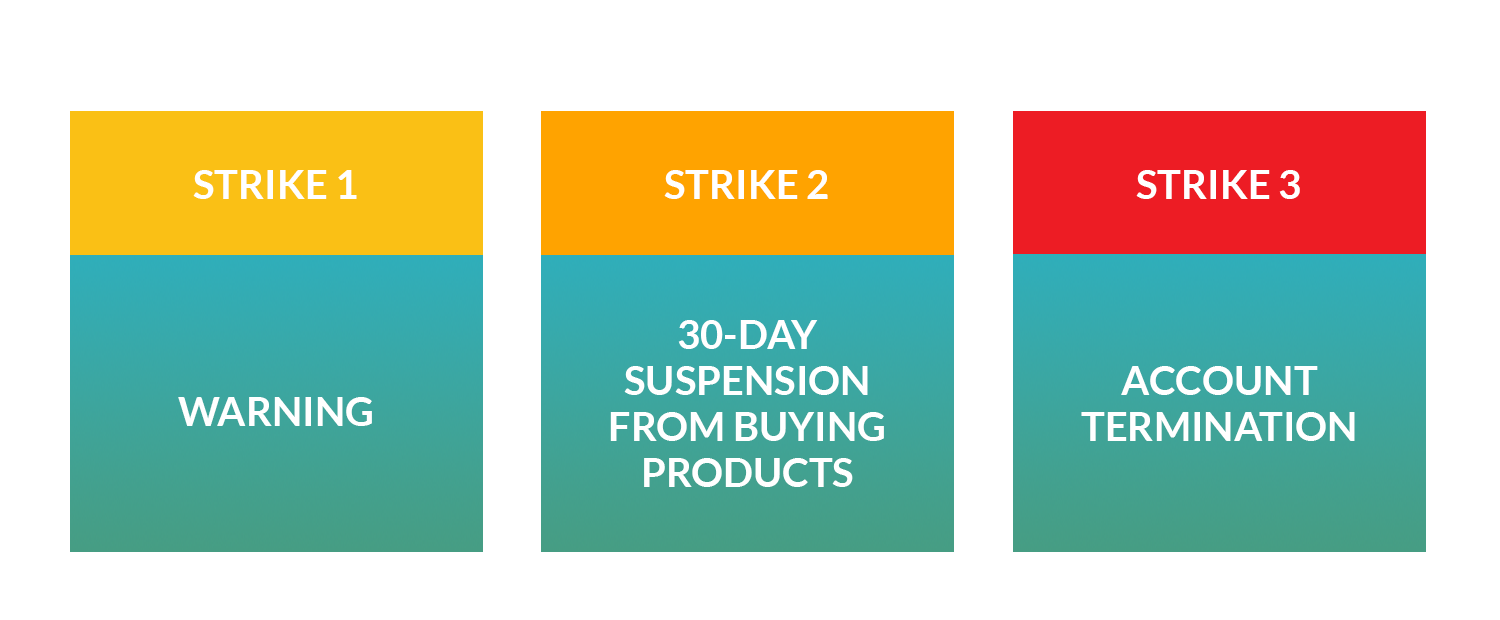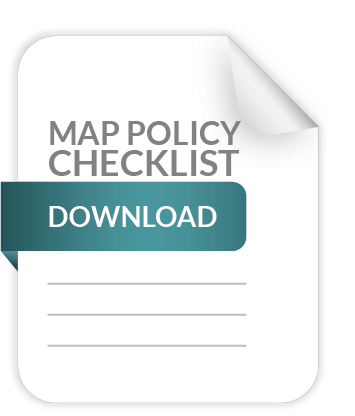According to Statista, there are 7 million US-based third-party sellers on eBay. According to Marketplace Pulse, there are 2.5 million US-based third-party sellers on Amazon. That’s a lot of online stores! And given that the vast majority of them are unknown to consumers, the easiest way for them to attract shoppers is by discounting products. It’s the high volume, low margin game. Unfortunately for the brands they sell, this practice causes a race-to-the-bottom environment that diminishes perceived value and kills margins for more profit-oriented sellers.
Brands have responded to this through the widespread adoption of minimum-advertised-price policies (aka MAPP). If you’re not familiar with this, it’s a unilateral statement by a company that tells resellers they cannot advertise a product below a set price (the ultimate sale price is not an issue). Consistently following MAPP can lead to positive incentives, and if the seller violates the MAPP, they risk sanctions that include losing discounts, advertising allowances, and even account termination.
When written and implemented properly, MAP policies even help protect brands in ways that extend beyond price. By removing non-compliant sellers, brands become less of a commodity and therefore, more unique. This strategy boost's a brand's value and also helps to develop a unified brand presence, which makes it less confusing in the consumers’ eyes. Of course, having stable profit margins makes retailers stand behind the brand and seek deeper relationships.
How Does a Brand Create a MAP Policy?
Many brands will search the internet and use the policies of competitors as a starting point. Companies like MAPP Trap can provide legally vetted templates. But even a good template still needs to be adapted to reflect each brand’s specific sensibilities. Being a legal document, brands should always consult an attorney that specializes in antitrust laws and unilateral pricing policies before publishing.
A good MAP policy should be user-friendly and easy to understand. And it should cover the following points:
-
Why is the brand implementing a MAP Policy? This is usually one or two brief paragraphs about the brand itself and some of the reasons for the MAPP. Some of the top reasons are to defend a premium brand, to maintain equitable margins for all retailers, and to keep a level playing field with brick and mortar stores.
-
What constitutes a MAP violation? There are many different schools of thought on this. All policies cover the listing price, but there is some variance regarding what defines the MAPP price. Is it list price plus shipping? Does it pertain to bundles (in which case the total price of the bundle can’t be listed below MAPP for the included product). Can a merchant list a discount percentage along with the price? Can they say “call for lower price?” It’s all personal. Just remember, brands must enforce whatever they state is a pricing violation, so they should only threaten what they’re willing to do.
-
What is the penalty for violating MAP pricing? Although a properly implemented MAPP is not illegal, violators are not breaking the law, just the policy. You cannot sue a retailer for not following MAPP. Your only recourse is to stop selling them your product(s). Because of this, it is recommended that policies contain real consequences, or, as we say, they must have teeth. Most brands use a three-strike strategy. For example:

Other penalties may include loss of discounts, freight allowance, payment terms and/or advertising co-op fees. Remember, a policy is only as effective as the consequences so companies must follow-through. Those that don’t not only lose credibility, but there could be legal implications.
4. Can the brand cut off the small guys and leave the big ones alone? Not legally. With MAPP every retail account must be treated equally. A company that responds inconsistently to MAPP violations invites disputes and potential litigation. Act unilaterally, not collusively. U.S. price fixing laws prohibit collusion between the vendor and retailer. Brands should set their own policy without the influence of any retailers.
Which Products Should Be Subject to MAPP?
Something many brands don’t realize is that not every product needs to be protected by a MAP policy. The company should assess which products are the most important to them. Which products do they and their retailers rely on the most? It usually falls under the 80/20 rule. Remember, online retailers rely on discounts to attract consumers so letting them sell slower-moving items at slightly lower prices shows an appreciation of their challenges.
Before beginning to enforce a MAP policy, brands should distribute it to all stakeholders. This extends beyond just sending the policy (along with a MAPP product pricing list) to authorized sellers. Companies that work with wholesale distributors and independent sales reps need to let them know and require them to distribute it to their customers. It’s important to be comprehensive so that once the MAP enforcement period starts, sellers can’t say they didn’t know.
- Email policy and MAPP price list to all stakeholders (Caution: Don’t send notices through Amazon or eBay’s seller contact forms. It’s against their terms and conditions).
- Mail policy and MAPP price list to sellers without emails.
- Require sales reps and wholesale distributors to give copies to their accounts
- Issue a press release.
- Put the policy on the company website.
After the policy distribution is completed, the enforcement cycle should begin. The brand can send and track emails on its own, or a company like MAPP Trap can do it for them. Emails need to be tailored to reflect whatever penalties are specified in the brand’s MAP policy. They should also contain proof of the pricing violations (with time-stamped images) to remove deniability. Having a service do this is not only more efficient but the consistency makes the strategy more successful.
- Do daily tracking of MAP policy products on Amazon, eBay, Google Shopping, etc
- Create time-stamped screenshots of MAPP violations.
- Send (and track) notices to sellers with violation screenshots and prices.
If a seller’s account is going to be suspended because of noncompliance, it’s important to make sure no orders slip through the cracks. So, if it’s a direct account, the finance and shipping departments need to be informed. If they get inventory through a wholesale distributor then the brand needs to distribute timely do-not-ship lists.
- Send final suspension notices and copy all internal stakeholders.
- Inform independent sales reps and wholesale distributors with territory-specific do-not-sell lists.
One additional thing to know is that since MAP policies are unilateral and non-negotiable, brands should avoid discussing them with sellers. If they’re cut off it’s because they didn’t keep up their end of the bargain and they know it. Having conversations after the fact can be construed as negotiating, which is not allowed.
Are MAP Policies Effective?
When written and implemented properly, MAP policies are extremely effective. The brands that don’t succeed are the ones that are unwilling to follow-through with the enforcement process. If a brand is afraid to lose some top-line sales then it’s probably not for them. They may want to explore Authorized Seller Policies, instead. But the truth is that most companies make up any lost dollars in larger orders from compliant, authorized and happy retail partners. And, with a stronger brand image, their products tend to have longer shelf lives.

Whether a company makes products or sells products they both know that ecommerce is going to continue growing. That means competition for consumer dollars will increase as well. For brand-owners this will almost certainly translate into greater gross sales. The question is whether or not they choose to protect their brand from hyper-discounting and diminished perceived value by implementing a MAP policy.